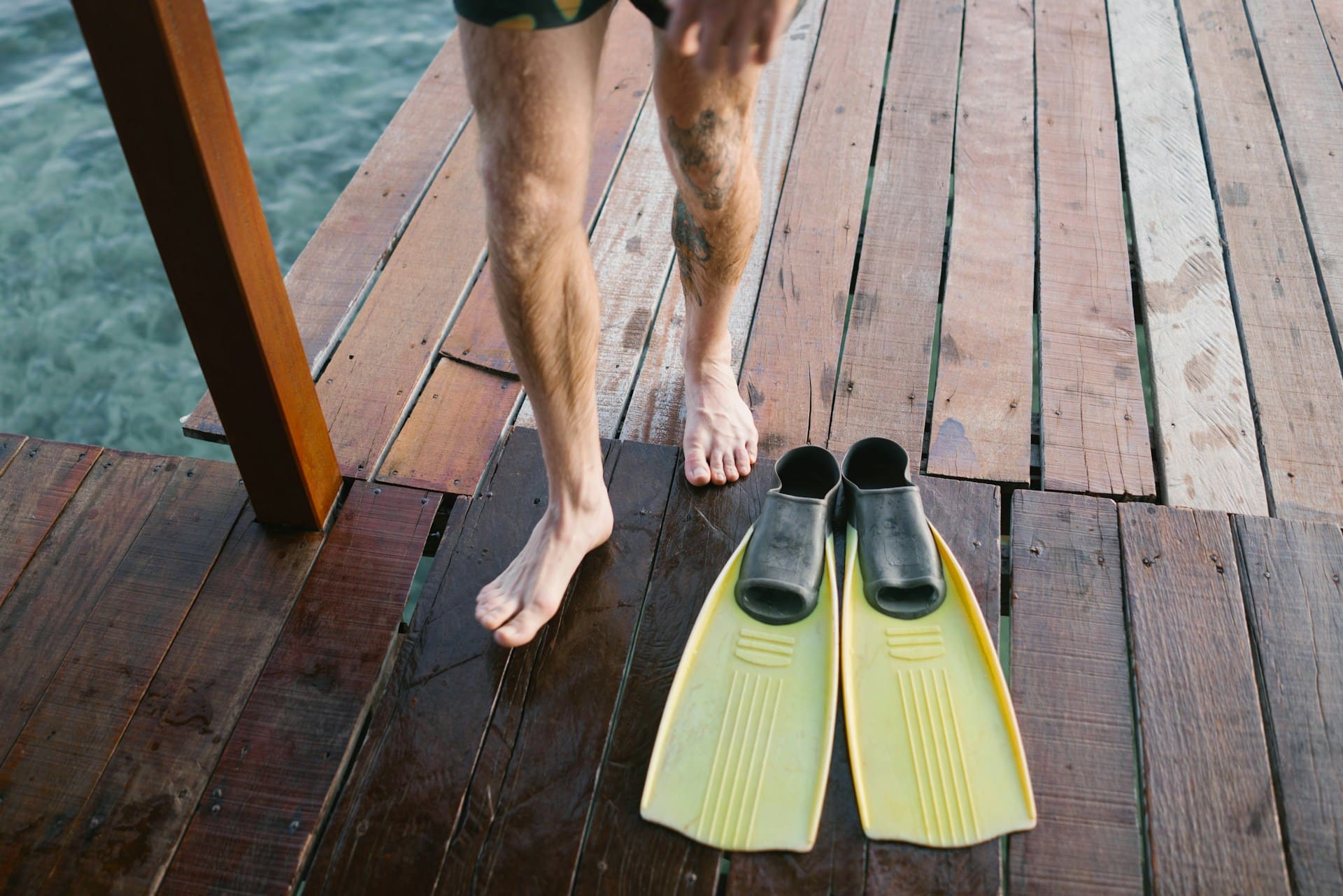Loose dock boards might seem like a minor issue, but they can quickly become a serious safety hazard. A single unstable plank can cause trips, falls, and long-term structural damage—especially when exposed to constant sun, waves, and weather. Whether you’re on Lake Travis, Lake Livingston, or the Gulf Coast, a few minutes of maintenance can save costly repairs and keep your dock safe for everyone.
Here’s how to spot, fix, and prevent loose dock boards before they become a bigger problem.
1. Start With a Full Dock Inspection
Begin by walking the entire dock slowly and paying attention to how each section feels underfoot. Look for:
- Boards that move or lift slightly when stepped on.
- Gaps between planks that have widened over time.
- Nails or screws that have risen above the surface.
- Squeaking sounds or visible wobble at the joints.
Check your dock both dry and wet. Moisture can reveal flex or movement that’s harder to notice when dry. For floating docks, inspect during calm water to ensure accurate readings of stability.
2. Identify the Root Cause
Loose dock boards can stem from several issues:
- Weathering and expansion: Texas heat causes boards to expand, then contract overnight, loosening fasteners.
- Water damage: Repeated soaking weakens screws and wood fibers.
- Corrosion: Rusted or stripped hardware loses its grip.
- Aging materials: Wood simply wears down over years of exposure.
Knowing the cause helps you decide whether you need a simple re-screw or a larger replacement.
3. Tighten Hardware Securely
If boards are intact but slightly loose, start by tightening the fasteners. Use stainless-steel or galvanized screws instead of nails—they resist corrosion and hold better over time.
Drive new screws at a slight angle for extra grip, and use washers to distribute pressure evenly. Avoid overtightening, which can crack wood or distort composite decking.
Tip: Replace any rusted hardware immediately—rust spreads quickly in humid lake environments.
4. Replace Damaged or Warped Boards
If a board is cracked, rotted, or warped, replacement is the safest solution. Remove the old board carefully to avoid damaging surrounding planks.
Before installing a new one:
- Inspect the support beams underneath.
- Replace any rusted brackets or rotted stringers.
- Apply marine-grade sealant to exposed wood before securing the new plank.
Choose durable materials like composite decking or polyethylene modular sections from EZ Dock Texas—they don’t rot, warp, or splinter and require minimal maintenance.
5. Check the Substructure
Sometimes, the problem isn’t the board itself but what’s underneath. Examine joists, crossbeams, and float connections for wear or shifting.
If you notice sagging or unevenness, your dock may need leveling or float replacement. Modular floating docks are easier to adjust—sections can be lifted, replaced, or repositioned without tearing apart the structure.
6. Add Safety Features While You’re There
Repairs are a perfect time to upgrade safety. Add:
- Non-slip surfaces or rubber mats on high-traffic zones.
- Edge guards or bumpers where boats dock.
- Reflective tape or LED lighting for better visibility at night.
These simple additions not only reduce hazards but also make your dock more enjoyable year-round.
7. Seal and Protect the Surface
After tightening or replacing boards, seal the surface to prevent future loosening. Use a UV-resistant marine sealant or stain to protect from sun damage, rain, and humidity.
Avoid oil-based products—they attract dust and make the surface slick. Water-based sealers are better for both traction and the environment.
Plan to reseal every 1–2 years depending on weather exposure.
8. Inspect After Major Storms
Texas storms can bring high winds and shifting water levels that loosen even new boards. After severe weather, check for signs of movement, lifted corners, or twisted boards.
Make small repairs right away—catching issues early prevents expensive fixes later.
9. Consider Upgrading to a Floating Dock System
If your traditional wood dock constantly needs attention, upgrading may save money long term. Modular floating docks from EZ Dock Texas are made from UV-resistant polyethylene and designed to flex naturally with changing water conditions.
They eliminate most problems associated with loose boards—no nails, no splinters, and no rot—while offering exceptional stability and lifespan.
10. Schedule Regular Maintenance
Make dock inspection part of your seasonal checklist. Twice a year—once in spring and once before winter—walk every inch, tighten fasteners, and look for early warning signs of wear.
The more consistent your maintenance, the safer and longer-lasting your dock will be.
Keep Your Dock Solid and Safe
A loose board today can become tomorrow’s accident. By inspecting regularly, replacing damaged parts, and upgrading materials, you can protect both your investment and your loved ones.
For durable, low-maintenance floating dock systems that eliminate the hassle of loose boards altogether, visit EZ Dock Texas. You can also follow EZ Dock Texas on Facebook for repair tips, safety ideas, and updates from dock owners across Texas who trust EZ Dock for lasting waterfront performance.







